- Home
- Chuck Wendig
Aftermath: Star Wars Page 20
Aftermath: Star Wars Read online
Page 20
I’m about to join him.
Get it together, Norra.
Everything relies on this.
Make Temmin proud.
The tip of one boot anchors her against the wall. She presses up with her leg—the calf and thigh straining, burning. Then, groaning, she hauls herself up and over the ledge and onto the plantation roof.
Norra lies there for a moment. The massive black bat-wing of the TIE fighter—an evil-eye as she and some other rebels have called them, because that’s damn sure what they look like screaming at you through the endless void of space—and thinks: I’m about to fly one of those things.
One last exhalation. Whew. Better get to it, then.
—
“We’re in,” Temmin says.
Just then: banging at the door here at the comm transmission booth. From the other side: “Open up!”
Sinjir takes the blaster and fires a shot into the door mechanism. A flash of flame and a rain of sparks. The door judders, then locks.
“Do it,” Sinjir says.
Temmin hits the button.
The transmission begins.
—
All across the city of Myrra, HoloNet receivers flick on. Above cantina bar tops, in little galley kitchens, appearing above the wristwatch projectors sported by those stuck in a long bala-bala commute down the Main 66 highway. It appears on the big, cracked screen hanging just outside the Hydorrabad Arena in the middle octagon of the CBD.
On all the projections appears the face of Norra Wexley.
A pleading face.
The projected Norra says:
Akivans, your planet has been occupied. Myrra is now under the control of the Galactic Empire. Long have we resisted total occupation, but now the war is at our door. And with war comes crimes such as this:
A scene plays out. A boy holding up his hands. An Imperial officer with a pistol. Please. Please! I didn’t do anything. And the officer laughs and says, I know. Then the Imperial shoots the boy in the back as he tries to escape. The boy falls to the ground, dead.
The Imperial is not really an Imperial, and the dead boy is not really a dead boy. But few would even get the chance to recognize the artifice.
When they see it, all across Myrra the Akivans gasp. They shake their heads. They cluck their tongues. And all that soon turns to quaking in rage.
Norra appears again, her voice booming out:
Right now, at this very moment, a meeting takes place inside the walls of the satrap’s palace. Already a hotbed of corruption, this Imperial meeting means to negotiate the total occupation of your city and your planet. Will you stand for this? Or will you fight?
I say: fight.
And know that the New Republic stands with you.
Then Norra disappears.
A new projection plays, this one on a loop. Princess Leia appears and speaks in the same video many of the Myrrans have already seen, a holovid going around and around. It begins:
The New Republic wants you. The grip of the Galactic Empire on our galaxy and its citizens is relinquished. The Death Star outside the forest moon of Endor is gone, and with it the Imperial leadership…
Rae quakes.
Adea shows her the holovid outside the dining area—the others are still in there, once more arguing their respective positions. Now they’ve moved on to who exactly should become emperor in the wake of Palpatine’s death. When Adea pulled her out of the room, Adviser Tashu was floating an idea where they used a proxy to show that the Emperor was “still alive”—after all, he had many body doubles. Easy enough to use one. To her surprise, they all seemed to like that idea. And that’s when Adea got her.
And showed her the vid.
…at this very moment, a meeting takes place inside the walls of the satrap’s palace…
“Someone has sabotaged us,” Rae hisses. She sets her jaw and growls: “This is not known information.”
“I know.”
“Was it you?”
Fear travels across Adea’s face like a crack in a wall. “No,” she stammers. “I…Admiral, please, I would never—”
She thinks to press it. Reach out. Take the girl’s throat. Make her confess through a collapsed windpipe. But such cruelty is beyond her right now. Adea didn’t do this. No motive lines up. It makes little sense.
Who, then? Pandion? The satrap?
Someone else, someone unseen?
“Get me Isstra,” Rae says. Adea nods, and ducks back in through the large red double doors leading into the dining room. Doors opulent with scrollwork and carvings of some satrap fighting off strange creatures—a nexu in one carving, a pack of feral humanoids in another. Rae stares at it and suddenly sympathizes: I, too, am besieged.
The doors open as she watches them. The satrap emerges, all sycophantic smiles and deferential bowing and scraping. “Yes, Admiral Sloane, please, please tell me what I can do—”
She shows him the holovid.
His eyes go wide, wide, wider as he watches it. “Oh, my.”
“Show me a window that faces the front. Toward the Avenue of the Satrapy. Now.”
He nods, claps his hands, and with a lasso-whirl of a finger two of his attendants—young women garbed in soft, diaphanous golden scarves—follow after, feeding him small dried fruits as he walks worriedly and hurriedly forward. They go up a set of blue-tile steps, past a wall that is itself a burbling fountain, up another set of steps—these curving, and so tight that two cannot walk up them side by side. They reach a longer hallway, one lined with narrow, arrow-slit windows. “Here,” he says, chewing on one of the small dark fruits nervously.
Rae walks over to one of the slit windows.
Even now, she can see Akivans gathering out front. Not a mob. Not yet. But they regard the palace as an unpleasant curiosity. Like they’re trying to decide what they’re seeing. Or what to do. Or maybe they’re looking for a sign of what’s really going on in here—already they’ve surely seen the Imperial ships parked along the landing ring that forms the top of the palace. And they’ve seen the increased stormtrooper presence, the TIE fighters swooping, the occupation of several key locations across Myrra.
The situation is a canister of fuel, stuffed with a rag, the rag lit on fire.
The rag will burn. It will burn faster than anybody likes or expects.
And when it does: boom.
To Adea, Rae says: “Begin to prepare the ships.”
“It will take some time to calculate hyperspace jumps—”
“We can do that after we exit the atmosphere. Time is of the essence.”
This meeting is over.
Time to tell the others.
In the darkness, a red lightsaber rises from its hilt.
The blade gently sways—vwomm, vwomm. Leaving streaks of red in the black. Nearby, a fat assassin-spider dangles, its thorax glowing with a phosphorescent skull pattern. The arachnid spits venom at the red blade as the red glow moves closer. Then: The sword moves quickly.
The spider is bisected in twain with a little shriek and hiss.
Both halves plop to the floor.
The light returns to the room as a young rat-faced girl pulls back a black curtain over the window.
The wielder of the lightsaber: a long-snouted Kubaz, his eyes concealed behind gold-lensed goggles, the rest of his head swaddled in red leather scarves. He retracts the crimson blade into its hilt.
Three individuals stand before him. Two in black robes, their faces concealed. The third stands at the fore of them: a young woman. Pale. Hunched over, as if her spine refuses to keep her straight. Her hands play at the air—fingers like the legs of that spider, plucking invisible threads that perhaps only she can see.
They stand in a tenement on Taris—now, with the black sheet back from the window, this room is revealed as nothing short of a wreck. A tick-infested pile of pillows on the floor. Walls tagged with graffiti (one such piece of tagging: a stencil of a familiar Sith Lord’s helmet with the phrase beneath it reading VADER L
IVES). Rubble and ruin everywhere. Not much different outside: tenements stacked atop one another. Some are just shipping containers. Others are hulls from ruined spacecraft teetering precariously on top of or against each other. Rank pollution floats about: yellow like the scum on dirty water.
The Kubaz squeaks in his native tongue: “You have the credits?” The rat-faced girl translates for him, repeating his words in Basic.
“Is it really his lightsaber?” the young woman asks. Her voice is a raspy whisper, as if something is wrong in the well of her throat.
“It’s the Sith Lord’s laser sword, sure enough.”
“May I?” she asks.
The Kubaz shakes his snout and says: “No. Not until I see the money. Money talks or Ooblamon walks.”
Ooblamon’s little friend, the rat-faced girl, giggles when she translates.
The pale woman looks to the other two in their dark robes. They whisper to each other. Almost as if arguing.
She turns back. “How do we know it is Vader’s blade?”
“You don’t. But it’s a lightsaber, isn’t it? And it’s red. Isn’t that the color you seek?”
More whispering, more arguing. A mad susurrus.
Finally, some sort of concession. The robed figures each give her a small box marked with strange sigils. She shakes them: Ooblamon the Kubaz knows the sound of credits rattling. It warms his unkind heart.
They hand over the boxes. He refuses to take them, and instead the rat-girl scurries over. “This is my cohort and apprentice, Vermia.” She takes one box in a clicking claw, and then the other. She hurries back to the corner to begin her count. Credit chattering against credit as she makes her tally.
The young woman offers her pale hand. “The…lightsaber, please.”
“When the count is complete,” Ooblamon says. He cocks his head and stares at them through his goggles. “What are you? You’re no Jedi.”
“We are adherents,” she hisses. “Acolytes of the Beyond.”
“Fanatics of the dark side?” he asks. “Or just children who want to play with toys?”
“Judge us not, thief.”
The Kubaz sniffs with his snout, a dismissive gesture. Vermia hurries back over and says with a chuckle: “The credits are all there.”
Ooblamon goes to hand over the weapon, but as the young woman reaches for it, he yanks it back. Then he pulls back a bit of his own brown, grungy robe and shows the blaster hanging there. “You get squirrelly and think to use that laser sword on me or my cohort, this will not end well.”
“We are not violent. Not yet.”
The Kubaz grunts, then hands over the lightsaber.
The three strangers suddenly turn to face one another, holding the lightsaber among them. Whispering to one another. Or to it.
The woman mutters a half-heard expression of gratitude, then they start to hurry out the door. As they go, Ooblamon calls after:
“What do you plan on doing with that thing?”
The woman says, simply: “We will destroy it.”
He laughs. “Why would you do that?”
“So that it can be returned to its master in death.”
They scurry away. Outside, the sounds of Taris: a bleating horn, someone yelling, a speeder bike backfiring, distant blaster fire.
Vermia says: “Was that really Vader’s weapon?”
The Kubaz shrugs.
“Who knows. And really, who cares?”
A line of sparks, red as a demon’s eyes, runs up along the outside of the door leading into the console room of the comm station. Mister Bones stands in front of it, waiting. Humming a discordant little song—a song some maniac might think is pretty, the kind of song that sounds like wind howling through a cavern might sing. Sinjir waits, too, pistol drawn.
They’ll come for us.
And then he wonders, What then?
Already he’s alerted the Imperials that he is, indeed, still alive. They won’t realize it, yet. But when all of this shakes out, someone somewhere in some office of the Empire will see that Officer Rapace pinged their networks with his name and his facial scan. What if they capture him?
Oh, irony of ironies—
He will likely be taken before a loyalty officer.
One such as himself.
He almost wants to laugh at that.
The line of sparks, halfway up the door now.
“Wait,” Temmin says. “Wait, wait, wait. Look.”
Sinjir looks. An evaporator unit hangs from the ceiling like a pregnant droid. “So? It’s an evaporator. They don’t use ducts we can fit through—it’s just piping, isn’t it? Unless you have a molecular miniaturization ray handy that will magically shrink us down to hamster size, I don’t think—”
“No, look.” Temmin points to a pair of hinges. He gets onto his tippy-toes, then raps on the thing with the back of his knuckles.
It results in a hollow bong, bong, bong.
“It’s not real,” Sinjir realizes out loud.
“Right. It’s a way out. Probably to the roof. They used to do rebel transmissions from this booth. My dad might’ve put this here. Or used it.” Temmin jumps up, catches the metal lip of the device—his weight pulls the thing down, and it hangs off its hinges.
The welder line around the door is almost to its end.
“No time like the present,” Sinjir says, and hurries over.
Up there, through the space: a ladder.
The boy was right.
They climb.
—
Temmin sticks his head up through a hatch. The door swings open and everything is washed out in a wave of searing white: The comm console room was so dark, and out here it’s almost too bright. He pulls himself up, his eyes still adjusting. As he belly-flops onto the roof of the comm station, he can’t help feeling an odd surge of pride. Inside his mind, he repeats what he told Sinjir: My dad might’ve put this here.
But then the familiar anger stomps down its foot:
Dad being a rebel is why he got caught.
And why Mom left.
And why everything fell apart.
That good feeling he had is instantly poisoned. Like a beautiful flower sprayed with acid—it withers and rots inside him.
He looks up, then, blinking.
He hears the sound before he sees it.
A TIE fighter. He blinks again, staring up at the sky, toward the sun.
No. Not one TIE fighter. Two of them.
He helps haul Sinjir up—“We have to move! Incoming!”
The first TIE bears down on them like a meteor ready to roll right over them. It’s then that he gets it.
Temmin knows what that fighter is here to do.
Bones hops up out of the hole—
Temmin tackles Sinjir and the battle droid. He knocks them both behind a metal fixture meant to look like the exterior mechanism of the (not-actually-working) evaporator system. They all hit the deck.
Just as the TIE fires its front cannons.
The building shakes and from the other corner of the structure there’re streaks of fire and a small blooming cloud of yellow smoke. Temmin peeks his head out and sees the antenna array tilting off the roof and falling away, leaving behind a rain of electrical embers.
They killed the transmission.
He has to hope it stayed out there long enough.
And now, here comes the second TIE fighter. It starts firing at the rooftop, likely intent on bringing the whole building down. It’s not a bomber, so it won’t happen with one run, but those weapons at the front are no small popguns, either. A couple of passes and the top half of the comm station will be turned to flaming chunks of rubble.
He grabs both sides of Bones’s head. “You got this?”
Bones says in that voice that warbles from deep to shrill, a mechanized distortion: “CONSIDER IT DONE, MASTER TEMMIN.”
The TIE cannons begin shattering the other half of the roof. Debris sprays. Fire plumes. The sound of the fighter and its guns and the explos
ions roars in Temmin’s ears. Not just his ears. He can feel it in the back of his teeth. Sinjir winces, clearly feeling it, too, popping up to fire off a few futile shots at the incoming fighter—and then turning to pop shots at the stormtroopers now coming up through the escape shaft.
Bones shrieks: “ROGER-ROGER.” Then the battle droid jumps up in the air, tucking arms and legs together, forming a cannonball—
And crashing through the TIE fighter’s front windshield.
The TIE wibbles and wobbles in the air, careening drunkenly across the Myrran rooftops—it zigzags herkily-jerkily out of sight.
Just as the first TIE, now looping back on its return trip, begins firing its cannons. The blasts pepper the top of the building, crossing the rooftop, and coming right for them. Temmin turns and looks—there’s no time to think, only time to act, but there’s no other roof to which they can jump—
Sinjir points.
A third TIE has joined the fray.
It swoops in, front blasters flashing—lasers unzipping the sky.
Lasers that strike the first TIE in the side. Its hexagonal wing panel breaks off, hitting the side of the comm station. The rest of it spins off to the side, streaking along the building like a meteor—it crashes into the side of an old office building, erupting in a ground-shaking boom.
The third TIE—their savior—shrieks overhead.
Sinjir, panting, says: “I think your mother found her ride.”
Temmin nods, checking himself over to make sure he’s all there. Mom really is one starcracker pilot. No time to think about that—or her—right now. Instead he says: “We better go. They’re gonna swarm us in no time.”
—
Norra finds herself thinking about wasps.
Here, in Akiva, there exists a wasp: the redjacket. The length and width of the tip of one’s thumb, the redjacket wasp is a scourge. They are mean, vicious creatures. They sting. Their stingers suck up blood. They take the blood to feed their young and use it to build their signature rust-red nests. Mostly, you find them out in the jungles, though once in a while they stray from their comfort and you find a nest under an overhang or a rooftop (at which point the common solution is just to burn the whole thing with a can of engine solvent and a flick-tip lighter, making a homemade flamethrower).

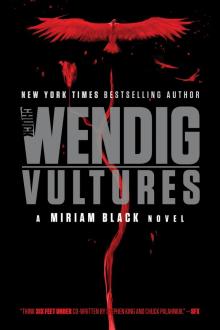 Vultures
Vultures Mockingbird
Mockingbird Wanderers
Wanderers The Cormorant
The Cormorant Empire's End: Aftermath (Star Wars)
Empire's End: Aftermath (Star Wars)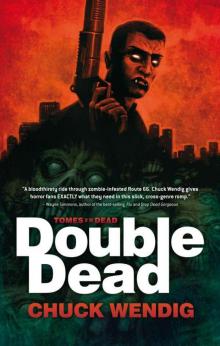 Double Dead
Double Dead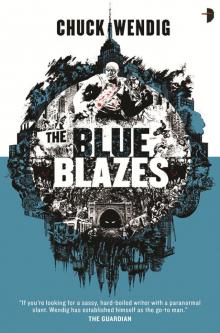 The Blue Blazes
The Blue Blazes 250 Things You Should Know About Writing
250 Things You Should Know About Writing Irregular Creatures
Irregular Creatures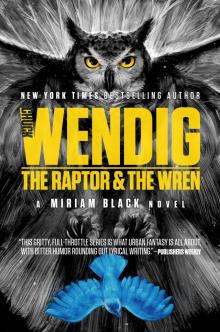 The Raptor & the Wren
The Raptor & the Wren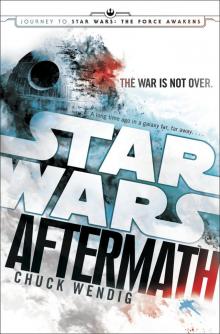 Aftermath: Star Wars
Aftermath: Star Wars Blackbirds
Blackbirds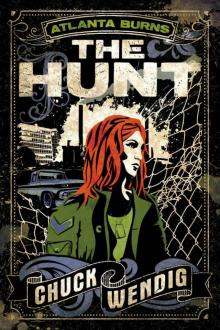 The Hunt
The Hunt Tomes of the Dead (Book 1): Double Dead
Tomes of the Dead (Book 1): Double Dead Gods and Monsters: Unclean Spirits
Gods and Monsters: Unclean Spirits The Harvest
The Harvest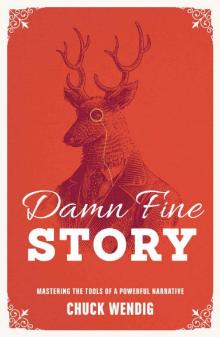 Damn Fine Story: Mastering the Tools of a Powerful Narrative
Damn Fine Story: Mastering the Tools of a Powerful Narrative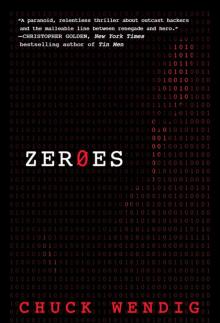 ZerOes
ZerOes Thunderbird
Thunderbird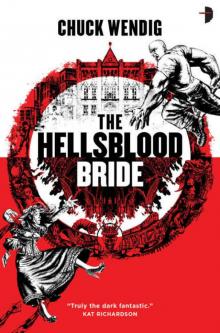 The Hellsblood Bride
The Hellsblood Bride Double Dead: Bad Blood
Double Dead: Bad Blood Life Debt
Life Debt